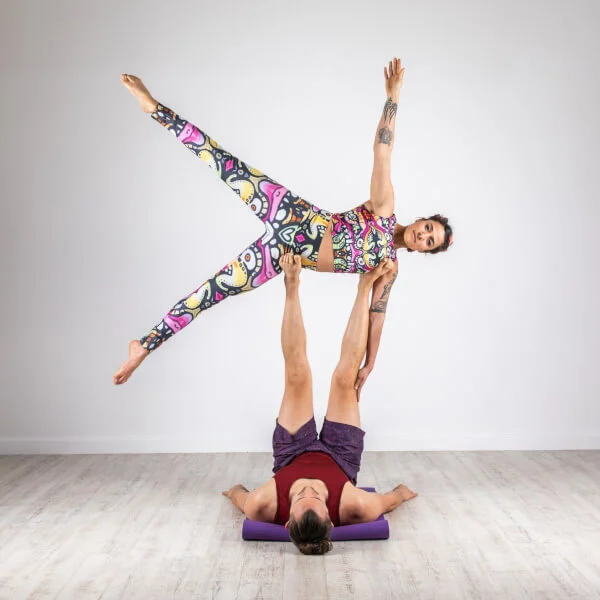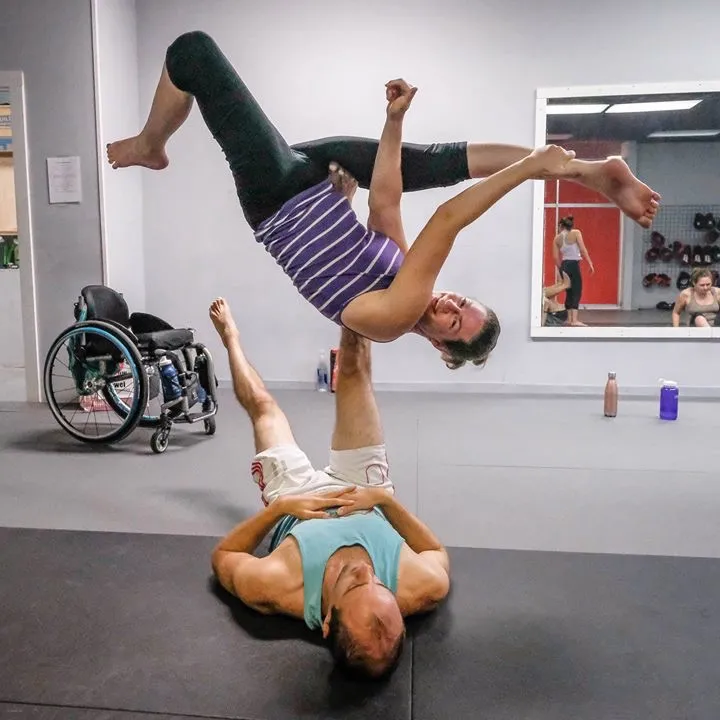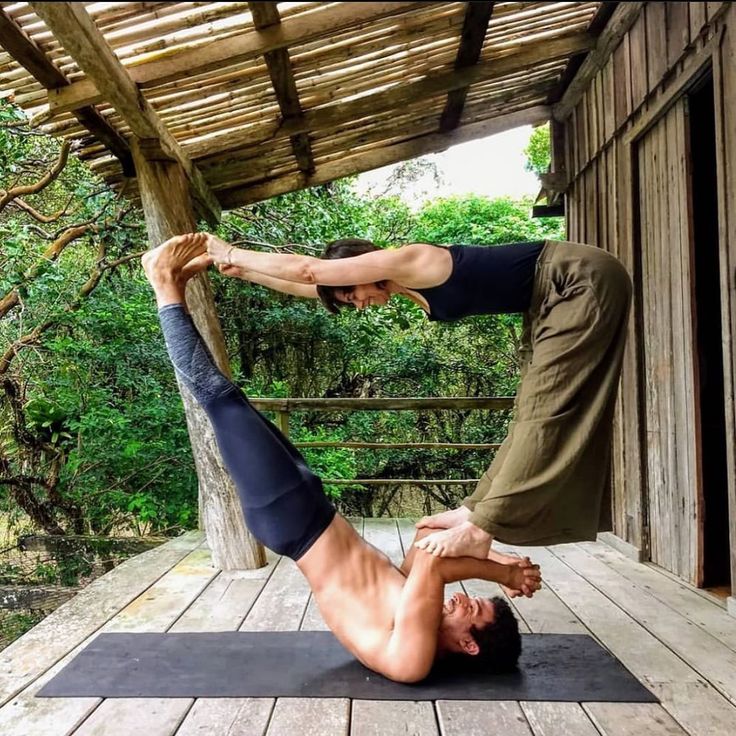I. Introduction

Acro yoga, a blend of acrobatics and yoga, is a practice that combines the dynamic power of acrobatics with the mindfulness of yoga. It is a discipline that originated in the early 21st century, merging traditional yoga postures with acrobatics and therapeutic Thai massage. This unique art form places emphasis on trust, communication, and balance, as two or more individuals work together to create a synchronized flow of movements.
Principles and Philosophy
The principles that underpin acro yoga revolve around the concepts of trust, support, and connection. Practitioners are encouraged to develop a deep sense of trust in their partner or group, as they work together to achieve various poses and sequences. The philosophy of it is rooted in the belief that through community and connection, individuals can experience personal growth, overcome fears, and develop a greater sense of empathy and compassion.
II. Health Benefits of Acro Yoga
It offers a wide array of health benefits that encompass physical, mental, and emotional well-being. The practice engages the entire body, promoting strength, flexibility, and agility while also nurturing mental clarity and emotional resilience.
A. Physical Benefits
From a physical standpoint, it serves as an excellent full-body workout. It builds core strength, enhances muscular endurance, and improves overall flexibility. As practitioners execute various poses and transitions, they engage their muscles, core, and stabilizing muscles, fostering a strong and balanced physical foundation.
B. Mental and Emotional Benefits
In addition to the physical advantages, it cultivates mental and emotional well-being. The practice encourages mindfulness, focus, and presence, allowing individuals to be fully immersed in the present moment. As practitioners collaborate with their partners to achieve poses, they also foster a deep sense of trust, empathy, and communication, which can translate to improved interpersonal relationships and emotional resilience.
C. Building Trust and Communication
It is renowned for its ability to build trust and communication between partners. Practitioners are required to communicate effectively and listen attentively, fostering a deep sense of connection and understanding. This process not only strengthens the bond between individuals but also enhances their ability to trust and support each other, both on and off the mat.
III. Techniques and Aspects of Acro Yoga

A. Flying, Basing, and Spotting
In acro yoga, participants take on one of three roles: the flyer, the base, or the spotter. The flyer is the individual who is lifted and moved into various poses. They focus on balance, flexibility, and control. The base is the person who provides stability and support for the flyer. They need to have strength, stability, and a good understanding of body mechanics. The spotter’s role is crucial for safety, as they ensure the safety of both the flyer and the base by providing assistance and guidance during the practice. Understanding these roles is essential for creating a safe and supportive acro yoga practice.
B. Partner Communication and Connection
Effective communication and a strong sense of connection between partners are fundamental in acro yoga. Practitioners must be able to communicate their needs, concerns, and boundaries clearly. Additionally, partners need to establish trust and develop a deep sense of connection to create a harmonious and fluid practice. The process of building this communication and connection not only enhances the acro yoga experience but also strengthens the bond between partners.
C. Safety Measures and Precautions
Safety is paramount in acro yoga, and practitioners must adhere to specific safety measures and precautions to mitigate the risk of injury. This includes proper warm-up routines, understanding individual physical capabilities, and effectively spotting each other during practice. Furthermore, utilizing crash mats and practicing under the guidance of experienced instructors are vital components of ensuring a safe and secure acro yoga environment.
IV. Acro Yoga Community and Events
A. Connecting with Like-Minded Individuals
The acro yoga community offers a supportive and inclusive space for individuals to connect with like-minded practitioners. Whether in-person or online, this community encourages open communication, shared experiences, and the exchange of knowledge. Engaging with this community provides opportunities for learning, growth, and the forming of meaningful connections with others who share a passion for acro yoga.
B. Workshops and Festivals
Acro yoga workshops and festivals provide platforms for practitioners to deepen their practice, expand their skills, and connect with a broader community. These events often feature experienced instructors who lead workshops on advanced techniques, therapeutic practices, and partner communication. They also provide an enriching environment for practitioners to immerse themselves in the practice, learn from others, and celebrate the art of acro yoga together.
C. Finding Acro Yoga Groups and Classes
Locating acro yoga groups and classes is crucial for individuals looking to engage in regular practice and grow within the acro yoga community. These groups offer a supportive environment for practitioners of all levels to come together, learn from each other, and progress in their practice. Additionally, finding accredited instructors and established studios ensures that participants receive proper guidance and a safe environment in which to explore and develop their acro yoga abilities.
V. Tips for Beginners in Acro Yoga
It is a beautiful and dynamic practice that requires a blend of strength, flexibility, and communication skills. For beginners looking to embark on their acro yoga journey, here are some essential tips that can help lay a strong foundation for a fulfilling and enjoyable practice.
A. Building Strength and Flexibility
As with any physical discipline, developing strength and flexibility is crucial for acro yoga. To build the necessary strength, focusing on core stability, upper body strength, and leg muscles is paramount. Incorporating exercises such as planks, push-ups, and squats can help build the foundational strength required for acro yoga. Additionally, flexibility plays a key role in executing various poses and transitions. Including regular stretching and yoga sessions in your routine can enhance overall flexibility, making it easier to move through acro yoga sequences with ease.
B. Starting with Foundation Poses
For beginners, starting with foundational poses is essential for gradually familiarizing oneself with the practice. Foundational poses, such as “Bird” or “Throne,” provide a starting point to understand the roles of the flyer and the base, as well as the communication and trust required between partners. Mastering these fundamental poses enables beginners to gain confidence, understand the mechanics of acro yoga, and develop the necessary skills for more advanced poses as they progress in their practice.
C. Seeking Professional Guidance and Support
Seeking professional guidance and support is invaluable for beginners in acro. Enrolling in classes or workshops led by experienced instructors provides a structured learning environment where individuals can receive proper guidance, hands-on assistance, and personalized feedback. Certified instructors offer valuable insights into form, technique, and safety measures, ensuring that beginners can approach their practice with confidence and knowledge. Moreover, practicing under the guidance of skilled instructors helps prevent the development of poor habits and minimizes the risk of injury.
By prioritizing strength and flexibility, starting with foundational poses, and seeking professional guidance, beginners can embark on their acro yoga journey with a strong and well-rounded approach. Embracing these essential tips lays the groundwork for a safe, fulfilling, and enriching experience in acro yoga, offering beginners the opportunity to develop a deep connection with themselves, their partners, and the practice as a whole.As an inclusive and engaging practice,it has the potential to positively impact the well-being of those who engage in it.

